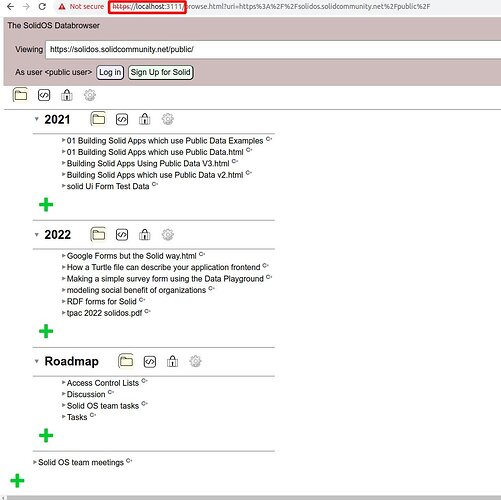Does that mean existing Solid implementations could easily be rejiggered to only provide solid-lite?
Yes, should be quite easy. Just set an ACL to say everyone can read, owner can write at the root.
Auth will be a case of level 1/2/3. 1 (null auth) supported out of the box – do nothing. 2 API_KEY is an easy add for personal online data store. 3. PKI Auth for multi user servers is a bit of work but not much. Maybe a day. That would be baseline support in different scenarios.
I’d love to hear you expand on that! Does it rely on a piece of nostr as a core dependency?
The approach to PKI taken by SolidOS is to use schnorr signatures. Meaning your 64 char hex key is tied to your profile ID. An identity could be provided at the well-known path by dropping in a file. Reverse lookup by webfinger, or by providing a relay to lookup your profile from a key, quite easy. Nostr integration will be quite easy because it requires nothing more than a keypair and you can do everything, so adding one field to the profile in its simplest sense. Migration in nostr is no work, it’s native, so you get that for free.
The profile is the basis of tying everything together. Storage, followers, social graph, pubkey, inbox, outbox. Soapbox and ditto are quite advanced in this. The WebID community group are also making a JSON-LD version which makes life easier.
What we’re talking about is tweaks here and there, not a huge amount of work, just reuse the existing infrastructure like a bridge, but more native than a bridge.
Bluesky could work but that would be another module added to solid lite (SLIP) to interact with their model. However, fundamentally RPC is not the web, and bluesky identity is messy.
Solid Lite will have to support Solid-OIDC. It’s quite a beast though, and quite buggy, so it will be alot of work to get right. One of the motivations for Solid-Lite was to reduce that complexity. Congrats on implementing it, was it hard to debug? Solid-Lite could certainly copy or support Rauthy.
The aim was to build a useful working server in a weekend and get up and running with apps. It’s already proven to be able to do that.
Next phase will be SLIPs to add the functionality that everyone wants, Range 3001-4000 SLIPs are set aside for AP integration. My guess is that with about 5-6 modules you’ll get basic interop going. And I’ll build that into microfed which will be Solid-Lite + AP.
